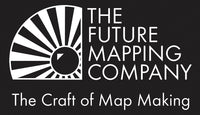Maps and Colour

What is the purpose of colour in maps?
In map-making, the colours are chosen to highlight boundaries and make the map look appealing, rather than the sort of colour coding device that you'd find in an info-graphic.
The maps we all grew up with in the schoolroom are coloured with contrasting pastel shades so that we can distinguish the shapes of neighbouring countries and remember them better. These familiar shades act as an aide memoir by adding an extra layer of memory to what would otherwise be a sea of shapes with strange names.

How many colours should a map use?
In 1852, the thinking was that “no more than four colours are required to colour the regions of a map so that no two adjacent regions have the same colour.”
This was known as the Four Colour Theorem (or The Four Colour Conjecture). It was first mentioned in a letter by Augustus De Morgan (1806 – 1871) who'd been asked by his student what the least possible number of colours were to fill in a map so that the neighbouring counties were always coloured differently.
Unfortunately, proving the Four Colour Theorem was difficult until 1976, and even then it was with the help of a computer, so the Five Colour Theorem followed 11 years later. This was based on the original Four Colour Theorem and developed by Percy John Heawood, and was far easier to prove.
However, it turned out that neither theorum was of much interest to cartographers who simply continued to use as many colours as they felt like!

Other than highlighting boundaries, what role can colour play in maps?
Info-graphic maps visualise additional information in their maps through the use of colour. Some of these are described as choropleth maps - see image to the right. These are thematic maps in which areas are shaded or patterned in proportion to the measurement of the statistical variable being measured.
At The Future Mapping Company, we use shades of colour to accurately describe the contours of the land - topography - and the depth of the oceans - bathymetry, see below. You can read more about this in our blog post here.

How do we choose the colours for our maps?
Interior design moves with fashion and yet the world of mapping seemed to have been stuck in a bygone age of the Mercator projection and the traditional pastel shades. We have dragged the wall map well into the 21st century, and our passion for colour was at the heart of this transformation.
We create various styles of maps using different projections from the futuristic Sinu-Mollweide to the Classic Robinson. We then print each of them in a selection of modern colourways that fit the map so there's a projection and colour combination to suit every taste.
Colour inspiration can come from many places, fashion, art, this years Pantone trends or even historical colour guides - see image to the right and learn more here.
We're sure that you can find the perfect design to reflect your individual sense of style and give it a treasured place in your home.




